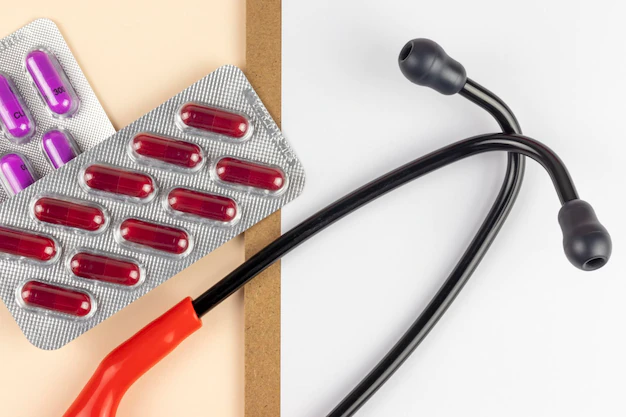Intravenous (IV) infusions are used for administering medications and fluids. They are often needed in the hospital setting for patients who are receiving chemotherapy, dialysis, or other treatments.
Transmission of Infection
Intravenous infusions are a very efficient way of delivering medication and fluids. The IV catheter, which is inserted into the vein, is used to deliver fluids through the bloodstream.
IVs are used in the hospital setting for many different purposes, including:
- Chemotherapy
- Dialysis
- Peripheral IV therapy
- Intravenous antibiotics
- Intravenous fluid therapy
- Post-operative fluid therapy
Tepezza is a targeted biologic therapy that is administered through intravenous (IV) infusion. The medication is used to treat thyroid eye disease in adults and is given as two separate infusions, each separated by at least two weeks. Tepezza is injected directly into the bloodstream and works by blocking the action of a protein called TGF-beta, which helps regulate the immune system and can cause inflammation in the eye muscles and tissues.
Recently, there has been a recall of Tepzza due to a potential risk of hearing loss following its use. According to the U.S. Food and Drug Administration (FDA), patients receiving the medication should be monitored for signs of hearing loss and if any changes are noted, the medication should be stopped immediately. In addition, the FDA has recommended that patients who have been using Tepzza should be referred to an audiologist for an evaluation and possible hearing aid fitting.
Due to the potential risks of hearing loss associated with Tepzza, there have been a number of personal injury lawsuits filed against the manufacturer. These lawsuits allege that the manufacturer failed to adequately warn patients and physicians about the potential risks of hearing loss associated with the use of the medication. As of yet, the outcome of these cases is still pending.
Infectious Agents and Viruses
Fluids and Viruses
Most IV fluids are infused at a rate of 1 milliliter (mL) per second. This is usually referred to as the infusion rate. In order for a patient to receive their prescribed infusion, the nurse must know how much fluid is needed.
In order to do this, the nurse must calculate the ideal body weight for the patient. The nurse will then calculate the ideal body weight based on the patient’s height and weight. Some patients only require small amounts of fluids, but some will require large volumes of fluid. It is important to know what the patient needs when calculating their infusion rate.
Chemotherapy
Intravenous infusions are also used in the hospital setting to administer chemotherapy drugs. These drugs are given at a rate of 5 to 10 milliliters (mL) per minute. The nurse must be aware of how much fluid the patient needs in order to receive their medication. This rate is usually referred to as a bolus dose. The bolus dose is administered by drawing a specific amount of fluid from a bag and then injecting it into the IV tubing.
Antibiotics
Intravenous infusions are also used for giving antibiotics intravenously. It is very important to be sure that the antibiotic being administered is not given at too high a rate. Giving too high a dose of an antibiotic can cause an infection in the patient. In some cases, giving too high a dose of an antibiotic can cause kidney damage.
Preparation for the Procedure
Before inserting an IV catheter into a patient’s vein, it is necessary to sanitize all areas where the needle will be inserted. This includes:
- The skin where the needle will be inserted (the skin must be cleaned with rubbing alcohol)
- The area where the IV catheter will be inserted (the area must be cleaned with rubbing alcohol)
It is also vital that all IV lines are properly flushed before inserting an IV catheter into a vein. This can be done by running saline through intravenous lines before inserting them into a vein or by flushing them with saline solution after inserting them into a vein.
- A syringe should also be used when preparing an IV line for injection with saline solution, because this will completely flush out any air bubbles in it and prevent air from entering into the line during infusion through it.
The Need for Sterilization
Sterilization is important because it prevents infection due to organisms that can cause serious infections if not treated properly. There are several ways in which sterilization can be done:
- Heat Sterilization: Heat sterilization requires using steam or hot water for sterilizing instruments and equipment such as IV catheters, needles, and syringes. This process should only be used with instruments and equipment that have been properly sterilized with steam or hot water before use. This process should only be used for instruments and equipment that have been properly sterilized with steam or hot water before use and should not be used on instruments and equipment that have not been properly sterilized with steam or hot water before use.
- Chemical Sterilization: Chemical sterilization involves using chemicals such as ethylene oxide or glutaraldehyde to sterilize instruments and equipment such as IV lines, catheters, needles, syringes, filters, and filters used with lines. This process should only be used with instruments and equipment that have been properly sterilized by chemical means before use and should not be used on instruments and equipment that have not been properly sterilized by chemical means before use.
Intravenous infusions are used in many different settings to give medications or fluids to patients who need them. It is important to know how much fluid is needed in order to give these medications or fluids safely.
